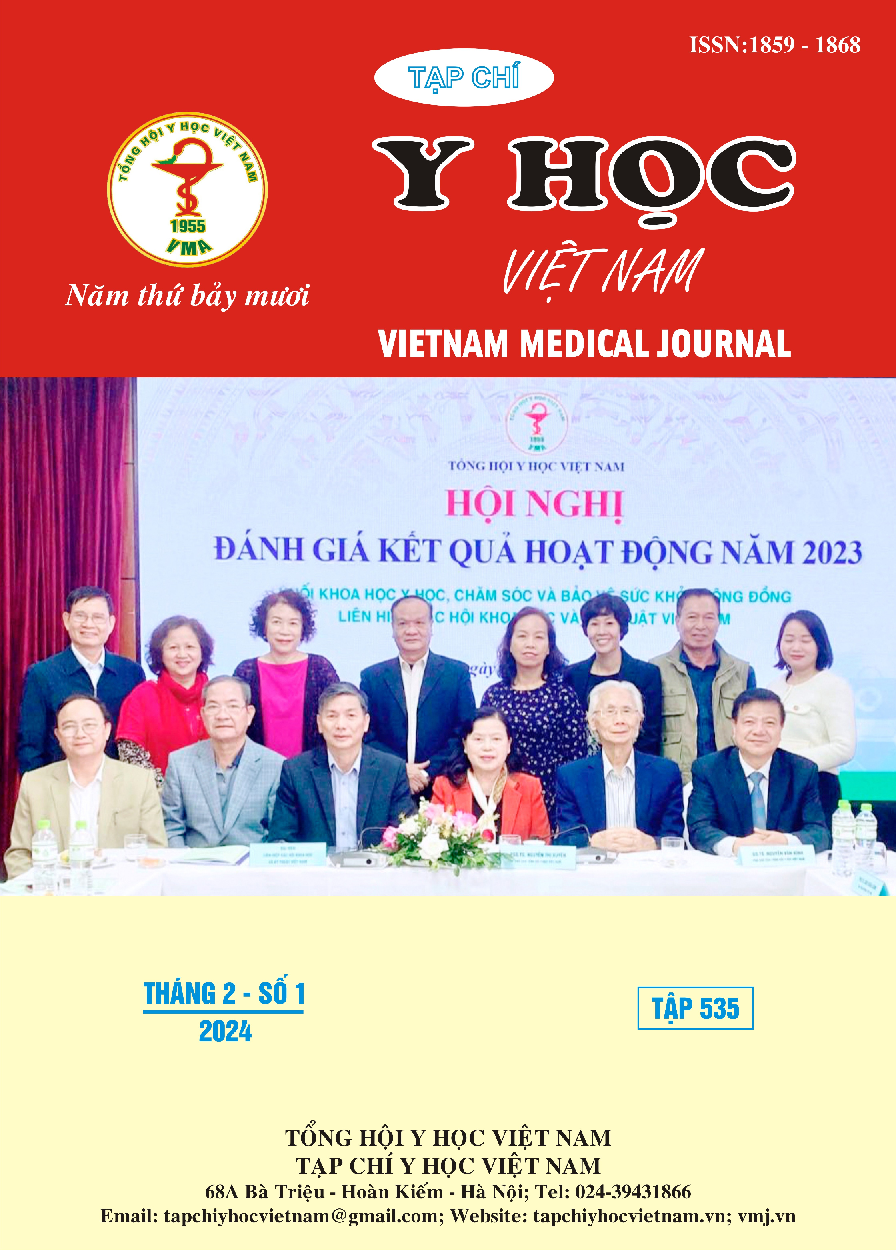CLINICAL FEATURES AND BRAIN MAGNETIC RESONANCE IMAGING IN PEOPLE WITH TEMPORARY LOBE EPILEPSY
Main Article Content
Abstract
Objective: Describe clinical characteristics and brain magnetic resonance imaging in patients with temporal lobe epilepsy. Subjects and methods: Descriptive cross-sectional study on 47 temporal lobe epilepsy patients at Bach Mai Hospital from 07/2021 to 08/2023. Results: The mean age of the study group was 42.15±18.35. The age at first onset is the age group over 50 years old, accounting for 36,2%. Clinical manifestations of epilepsy are diverse, partial seizures and generalized seizures have approximately the same rate, of which generalized seizures account for 48,9%. The frequency of monthly seizures is the highest, accounting for 87,2%. The most common aura symptoms are epigastric (25,5%), autonomic (27,7%), and psychiatric signs (21,3%). The most common symptom during epileptic seizures is impairment of consciousness (52,1%). The most postictal confusion is memory disorder, accounting for 40,4%. The most commonly detected lesions on brain magnetic resonance imaging are hippocampal atrophy (31,9%), encephalitis (11%). Conclusion: Temporal lobe epilepsy have diverse clinical manifestations. Most patients have aura symptoms before the seizure and the most symptom ictal seizure is impairment of consciousness. The most common postictal confusion is memory disorder. The most commonly detected lesion on brain magnetic resonance imaging is hippocampal atrophy.
Article Details
References
2. Murray, C.J., Vos, T., Lozano, R. et al. (2012). Disability‐adjusted life years (DALYs) for 291diseases and injuries in 21 regions, 1990–2010: a systematic analysis for the Global Burden of Disease Study 2010. Lancet 380: 2197–2223
3. L. Q. Cường, “Nghiên cứu một số đặc điểm dịch tễ học động kinh tại hai xã phường thuộc thành phố Hà Nội.,” Đề tài cấp bộ. Bộ Y tế, 2003-2006.
4. Fisher R. S., Cross J. H., French J. A., et al. (2017), “Operational classification of seizure types by the International League Against Epilepsy: position paper of the ILAE Commission for classification and terminology”, Epilepsia; 58, pp.522–530
5. Blumhardt, l. (1986). electrocardiographic accompaniments of temporal lobe epileptic seizures. The Lancet, 327(8489), 1051–1056. doi:10.1016/s0140-6736(86)91328-0
6. Bernasconi, N., Natsume, J., & Bernasconi, A. (2005). Progression in temporal lobe epilepsy: Differential atrophy in mesial temporal structures. Neurology, 65(2), 223–228. doi: 10.1212/ 01.wnl. 0000169066.46912.fa
7. French, J. A., Williamson, P. D., Thadani, V. M., Darcey, T. M., Mattson, R. H., Spencer, S. S., & Spencer, D. D. (1993). Characteristics of medial temporal lobe epilepsy: I. Results of history and physical examination. Annals of Neurology, 34(6), 774–780. doi: 10.1002/ ana.410340604
8. Urbach, h. (2005). imaging of the epilepsies. european radiology, 15(3), 494–500. doi:1 0.1007/s00330-004-2629-1


